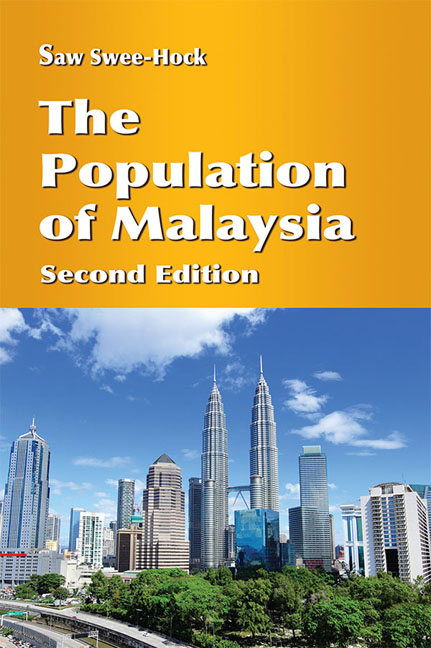Book contents
- Frontmatter
- Contents
- List of Tables
- List of Figures
- Foreword
- Preface
- 1 Introduction
- 2 External Migration
- 3 Internal Migration
- 4 Ethnic and Religious Patterns
- 5 Population Growth and Distribution
- 6 Population Structure
- 7 Nuptiality Trends and Patterns
- 8 Fertility Trends and Differentials
- 9 Mortality Trends and Differentials
- 10 Labour Force
- 11 Future Population Trends
- Bibliography
- Index
5 - Population Growth and Distribution
Published online by Cambridge University Press: 19 May 2017
- Frontmatter
- Contents
- List of Tables
- List of Figures
- Foreword
- Preface
- 1 Introduction
- 2 External Migration
- 3 Internal Migration
- 4 Ethnic and Religious Patterns
- 5 Population Growth and Distribution
- 6 Population Structure
- 7 Nuptiality Trends and Patterns
- 8 Fertility Trends and Differentials
- 9 Mortality Trends and Differentials
- 10 Labour Force
- 11 Future Population Trends
- Bibliography
- Index
Summary
We have observed the dominance of migration in the demographic history of Malaysia from the early nineteenth century to the outbreak of World War II in December 1941. This was followed by a lull of about five decades up to the 1990s, and thereafter a resurgence of large-scale migration surfaced and continued until nowadays. In contrast to the first wave of migration in the early years being monopolized by people from China and South Asia, the second wave was characterized by inward movement from nearby Indonesia and other Southeast Asian countries. In both periods, Malaysia was forced by the inadequate supply of labour from the local population to admit hoards of foreign workers into the country to work in the various sectors of the economy experiencing labour shortages. On their part, the foreigners were driven by a desire to secure a regular and larger source of income to support their families back home.
In the course of time, many Chinese and South Indian workers in the first wave chose to stay in the country, thus contributing to the diminution of the Bumiputera population and the emergence of a multiracial community. In more recent years, the principal source of migrant worker emanates from nearby Indonesia where the people belong in the main to the same religious and ethnic background as the Malays. This has resulted in a gradual rise in the proportion of the Bumiputera population at the expense of the Chinese and the Indians, who were already experiencing a much lower level of fertility. No less important is the impact of current immigration concerns about the prevalence of illegals, particularly the Indonesians, with all the attendant economic and social problems.
In interpreting the figures in respect of population size and growth, we should be mindful of the population censuses not being conducted on a uniform time interval of ten years as practised in most countries. The holding of the third pan-Malaysia Census in 1991 has resulted in a break in the intercensal time interval, 10 years for the 1970–80 period, 11 years for the 1980–91 period and nine years for the 1991–2000 period.
- Type
- Chapter
- Information
- The Population of Malaysia , pp. 78 - 101Publisher: ISEAS–Yusof Ishak InstitutePrint publication year: 2015



